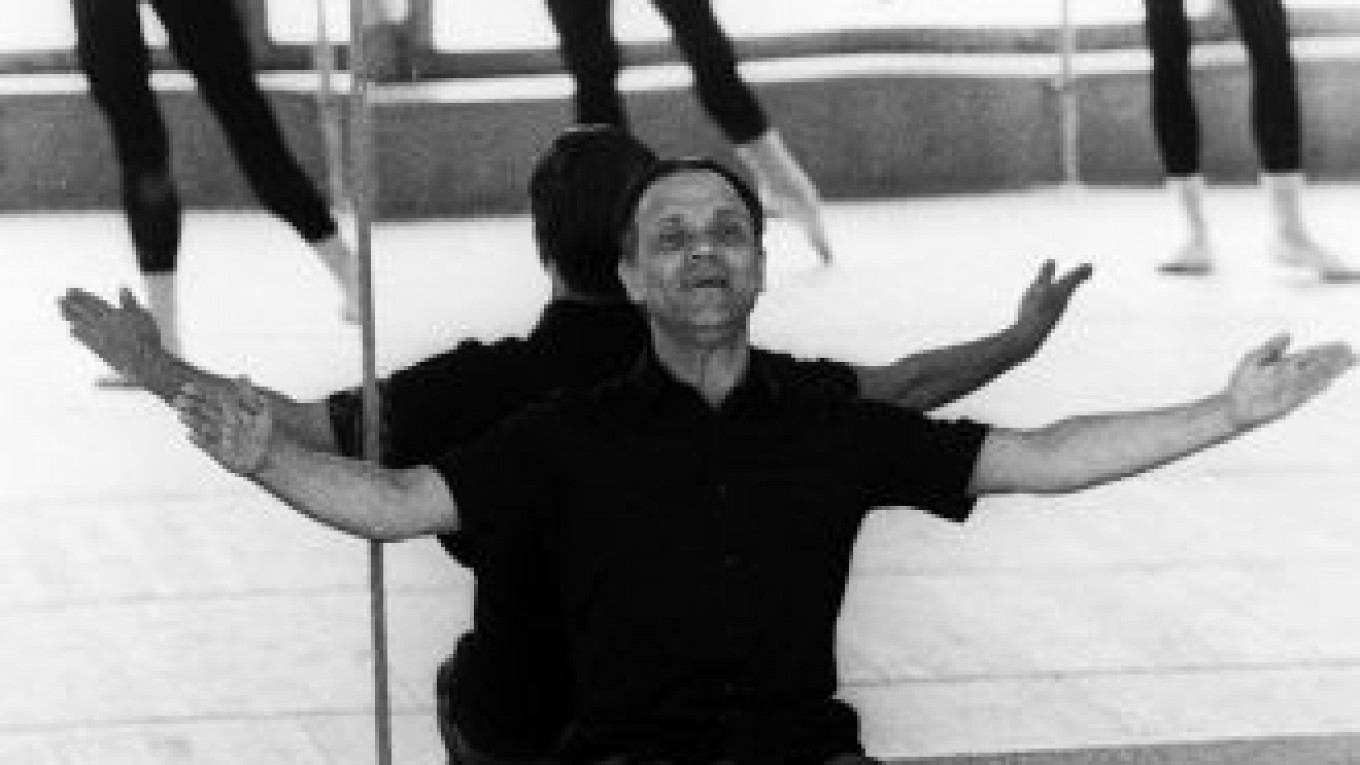Pyotr Pestov is little known outside of the world inhabited by dance professionals. But within that world he is a revered figure who, as a teacher for nearly five decades, has trained a host of prominent male dancers and exerted enormous influence on dance style and, indirectly, on choreography as they are seen today on stages throughout the world.
Pestov celebrated his 80th birthday in February of last year, and two months later a gala was presented in his honor in New York City, featuring three of his most distinguished former pupils, Bolshoi Theater premier danseur Nikolai Tsiskaridze, former Bolshoi ballet artistic director Alexei Ratmansky and star dancer, as well as artistic director, of the Berlin State Ballet, Vladimir
Malakhov.
The Bolshoi followed suit in January with a hastily organized and rather routine evening in Pestov’s honor. On Monday, the Stanislavsky and Nemirovich-Danchenko Musical Theater is due to pay him what looks to be a much more impressive tribute, in a gala performance that clearly focuses the spotlight on dancing and choreography by Pestov pupils, past and present, from Russia, Germany, the United States and Japan. In the audience, to receive the tribute, will be the master himself.
Pestov’s fundamental training as a dancer took place during World War II in Perm, which was then something of a Russian ballet Mecca, as the wartime refuge of Leningrad’s Kirov (now Mariinsky) Theater. He went on to dance in Perm and later in Novosibirsk, but abandoned the stage in 1958 to train in Moscow for a career in teaching, which he eventually pursued for more than 30 years at the Bolshoi’s training school, now known as the Moscow Choreographic Academy. His pupils there included, in addition to Ratmansky, four other of the last six artistic directors of the Bolshoi’s ballet company — Vyacheslav Gordeyev, Alexander Bogatyrev and Alexei Fadeyechev, who occupied the post in rather quick succession during the latter half of the 1990s, and the present incumbent, Yury Burlaka — as well as Malakhov, Bolshoi dancers Tsiskaridze, Vladimir Neporozhny and Andrei Bolotin and the San Francisco Ballet’s Yury Posokhov.
In 1996, Pestov was invited to join the faculty of the Stuttgart Ballet’s John Cranko School, a major training institution named in honor of the great South African-born choreographer who brought the Stuttgart Ballet to worldwide prominence in the decade before his death in 1973. At age 81, he remains there today, as a full-time teacher.
At last year’s New York gala honoring Pestov, Ratmansky praised Peskov’s teaching for the “elegance, musicality and solid discipline” that it instills in his students. When asked a few months later, in an interview for the American publication Dance Magazine, what it was that he valued most in a dancer, Peskov himself cited “musicality.” “Regardless of your physical movement,” he said, “you must understand that even in silence your body must create musical accents.”
Monday’s gala is due to present no less than 24 dance numbers, performed by dancers from the Stanislavsky and Nemirovich-Danchenko, the Bolshoi and the Mariinsky, joined from abroad by members of the Stuttgart Ballet, Berlin State Ballet, New York City Ballet and San Francisco Ballet, seven current Pestov pupils from the John Cranko School and a former Pestov pupil, 17-year-old Arata Miyagawa, from Japan.
The John Cranko School contingent will lead off the gala with what is simply titled “Class Concert of Pyotr Pestov.” Featured prominently on the program that follows will be choreography by Posokhov and Ratmansky — from the former, an excerpt from “Fusion,” to music of Prokofiev, recently created for the San Francisco Ballet, and from the later, the Adagio from the magical “Cinderella” he choreographed eight years ago for the Mariinsky, plus an excerpt from his superb Bolshoi resuscitation of Dmitry Shostakovich’s “Bolt.” Choreography by Gordeyev is also on the program in the duet titled “Tango.”
Among those scheduled to dance will be Peskov-trained Evan MacKie, with partner Anna Osadcenko, from the Stuttgart Ballet, and Malakhov and yet another one-time Peskov pupil, Mikhail Kaniskin, from the Berlin State Ballet. Also due to appear is Bolshoi prima ballerina Svetlana Zakharova, dancing the familiar “Dying Swan,” to music by Camille Saint-Saens, and an excerpt from a ballet created especially for her by the Spanish choreographer Nacho Duato.
Closing the program on Monday will be the pas de deux from the Bolshoi’s joint Ratmansky-Burlaka restoration of Boris Asafyev’s “The Flames of Paris,” in which the Bolshoi’s daredevil Ivan Vasilyev will partner with the San Francisco Ballet’s Maria Kochetkova.
“Pyotr Pestov Gala” is on Monday at 7 p.m. Stanislavsky and Nemirovich-Danchenko Musical Theater, 17 Bolshaya Dmitrovka. Metro Chekhovskaya. Tel. 650-3835, www.stanmus.ru.
A Message from The Moscow Times:
Dear readers,
We are facing unprecedented challenges. Russia's Prosecutor General's Office has designated The Moscow Times as an "undesirable" organization, criminalizing our work and putting our staff at risk of prosecution. This follows our earlier unjust labeling as a "foreign agent."
These actions are direct attempts to silence independent journalism in Russia. The authorities claim our work "discredits the decisions of the Russian leadership." We see things differently: we strive to provide accurate, unbiased reporting on Russia.
We, the journalists of The Moscow Times, refuse to be silenced. But to continue our work, we need your help.
Your support, no matter how small, makes a world of difference. If you can, please support us monthly starting from just $2. It's quick to set up, and every contribution makes a significant impact.
By supporting The Moscow Times, you're defending open, independent journalism in the face of repression. Thank you for standing with us.
Remind me later.


